Best trees for small gardens: 11 top picks for less-than-large plots
The best trees for small gardens will add structure and interest all year round without overwhelming the space
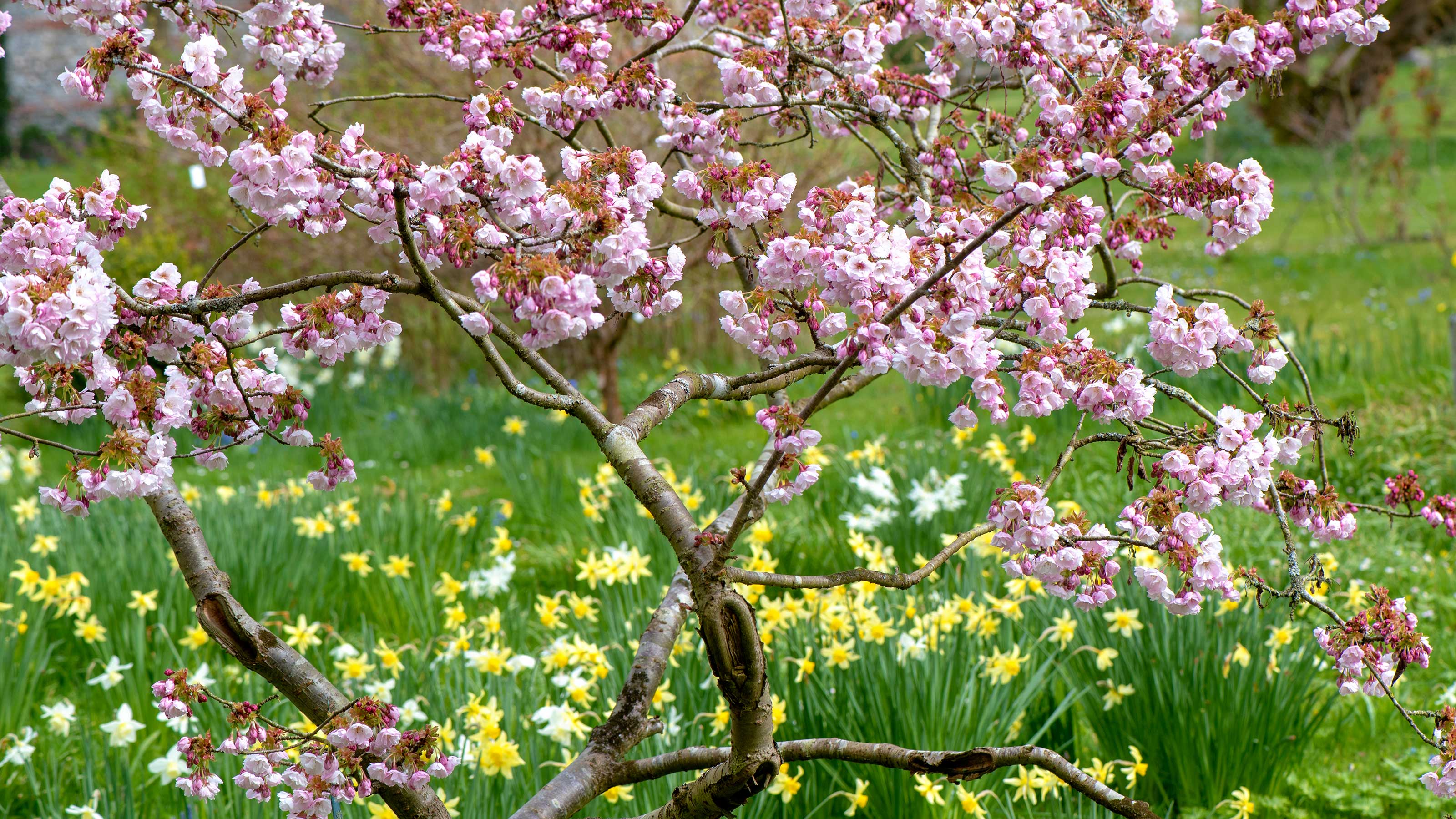
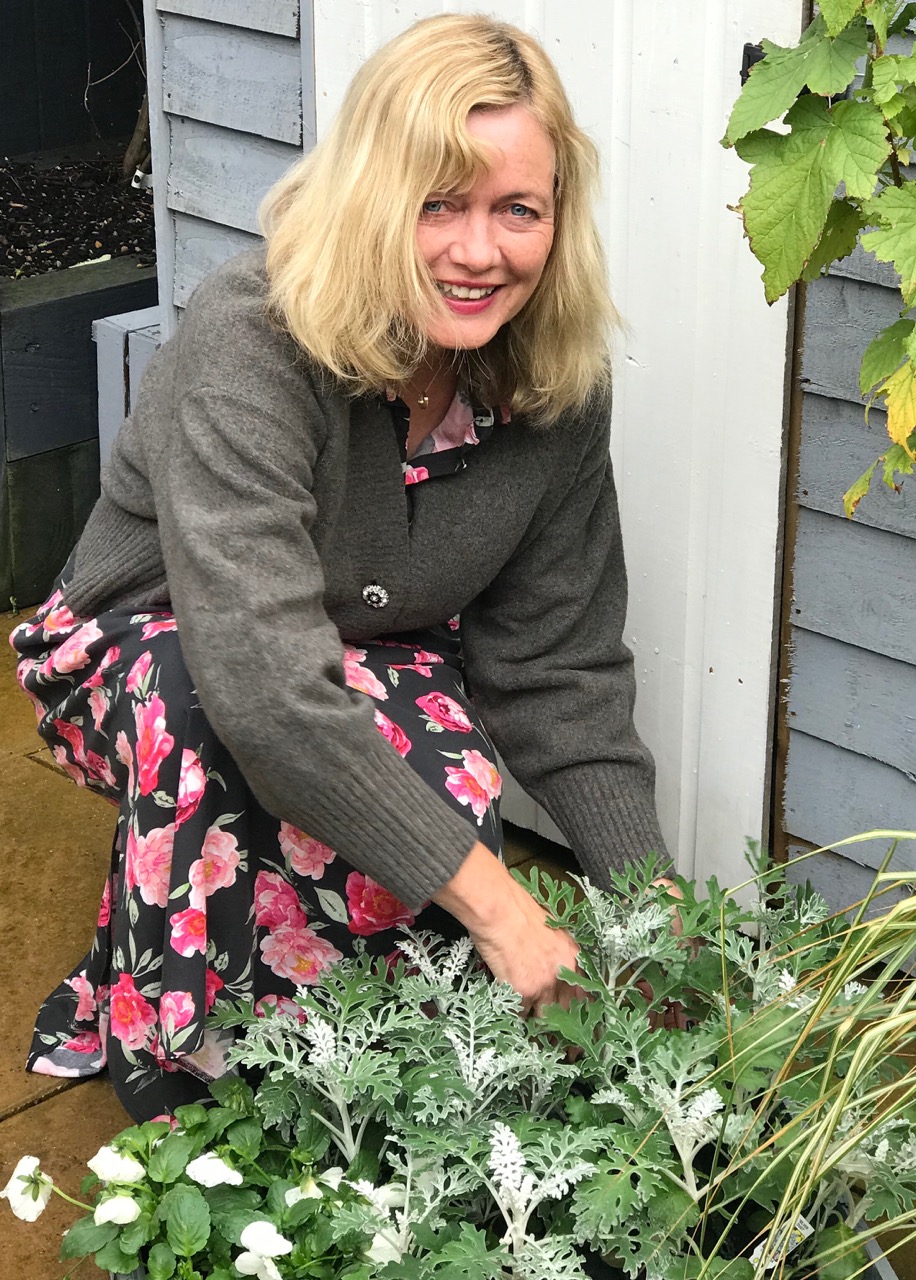
Introducing one of the best trees for small gardens to your outdoor space will bring many benefits. As well as being a strong focal point, trees create dappled shade, attract wildlife, and clean the air. Plus, with their ever-changing foliage, blossom and fruits, there is always something new to look at as the seasons roll around.
But, when considering small garden ideas, planting a tree might not be at the forefront of your mind. In fact, the thought may leave you feeling a little apprehensive. Yes, some are definitely best left to bigger backyards. But if you choose carefully, there are plenty of trees which can enhance even a tiny courtyard, without causing problems by getting too tall or bushy. So why not factor one in?
Best trees for small gardens: 11 types to try in your backyard
We've rounded up the best trees for small gardens below, to make it easy for you to find the perfect variety for your space.
1. Olive
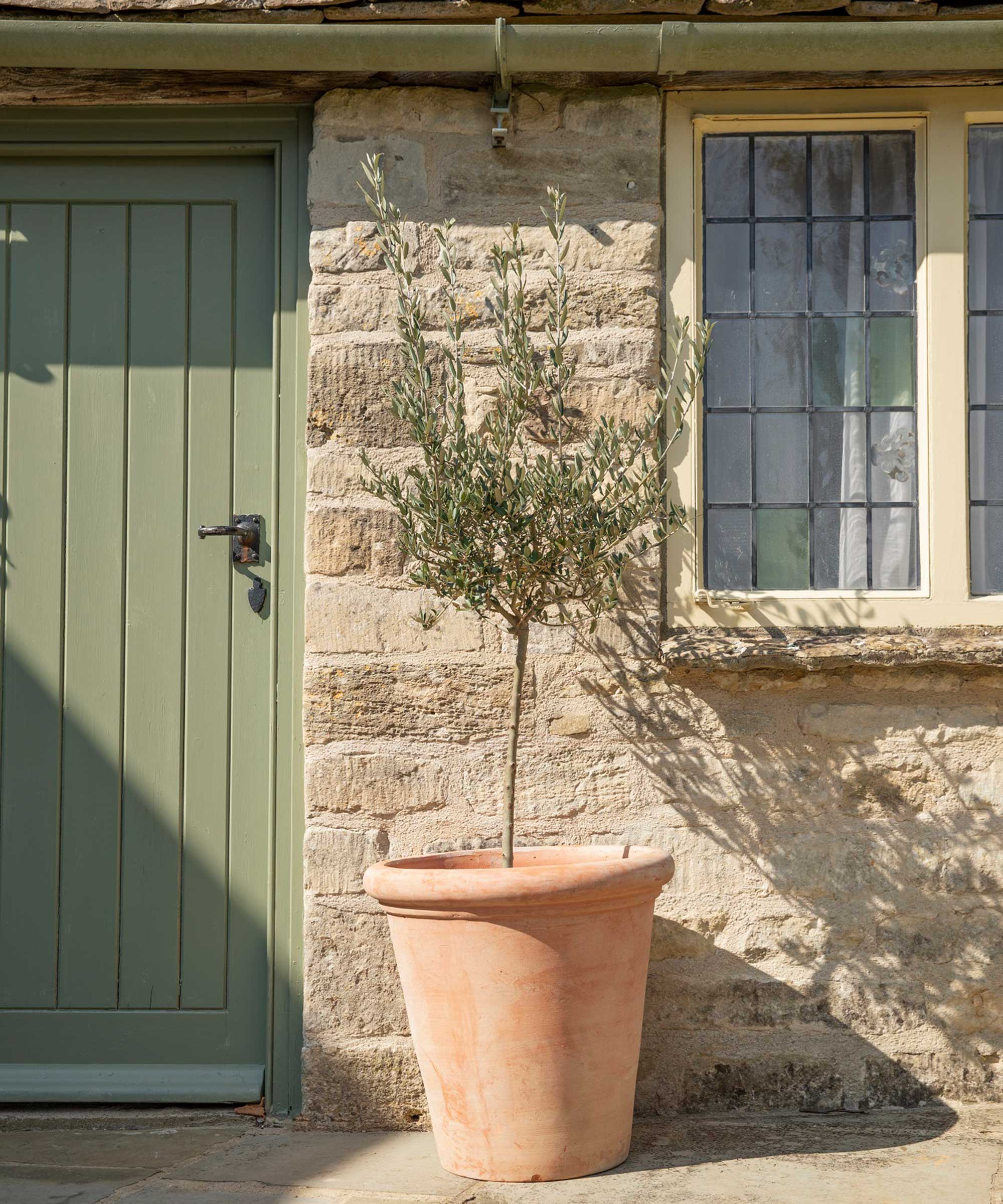
An olive tree in the Julius XXL Tuscan pot from Gardenesque
Olives are slow growing, reaching up to 6.5ft (2m) in 8–10 years, which makes them perfectly suited to smaller spaces. The silvery gray foliage stays intact year-round and they will thrive in a container.
When planting, add a spade of horticultural grit to the soil to ensure good drainage. They can be 'standards' – that is, trees with a bare trunk and a shaped rounded top, or for a less formal effect, they can be left to grow irregularly.
Olive trees need a sheltered spot to survive the winter. If you live in an exposed area, or your garden is in a frost pocket, wrap them up in some horticultural fleece if freezing conditions are forecast. Between April and October, feed olive trees once a month with a tomato feed. And keep them hydrated during the summer, watering until the liquid flows from the bottom of the pot. If they start to shed their leaves, a drink of water, a light prune and some food should solve the problem.
They'll add a lovely Mediterranean touch to your outdoor seating space. If you're looking for more small patio ideas, you'll find plenty in our feature.
2. Silver birch

Silver birches add an elegant accent to a garden
It is hard to beat the pale beauty of a silver birch tree and the good news is that there are varieties which are suited to smaller gardens.
Betula utilis jacqumontii is a medium-sized tree with an elegant, slender shape. It will grow to approximately 23ft x 11.5ft (7m x 3.5m) over 20 years. Hardy and suited to all kinds of soil and conditions, it has airy green leaves in the spring and yellowy brown catkins, then turns a glorious golden yellow in autumn. Once the leaves have fallen, the snowy white bark is revealed, which is a stunning feature in itself.
The tree is easy to care for: simply prune any dead or damaged branches in late summer to midwinter. If the bark looks grubby, it can be washed with plain water and a sponge.
Jeremy Hall, Group Plant Buyer at Squire's Garden Centers particularly recommends the 'Snow Queen' variety – it 'has very pronounced white bark from an early age,' and 'also encourages bio-diversity as it supports an array of insects that birds love.'
Silver birch trees can be planted in the ground as 'bare roots' between November and February, providing the ground is frost-free – so add them to your list of winter garden jobs. Container versions can be planted at any time. Keep the area around them weed-free for the first few years.
3. Amelanchier
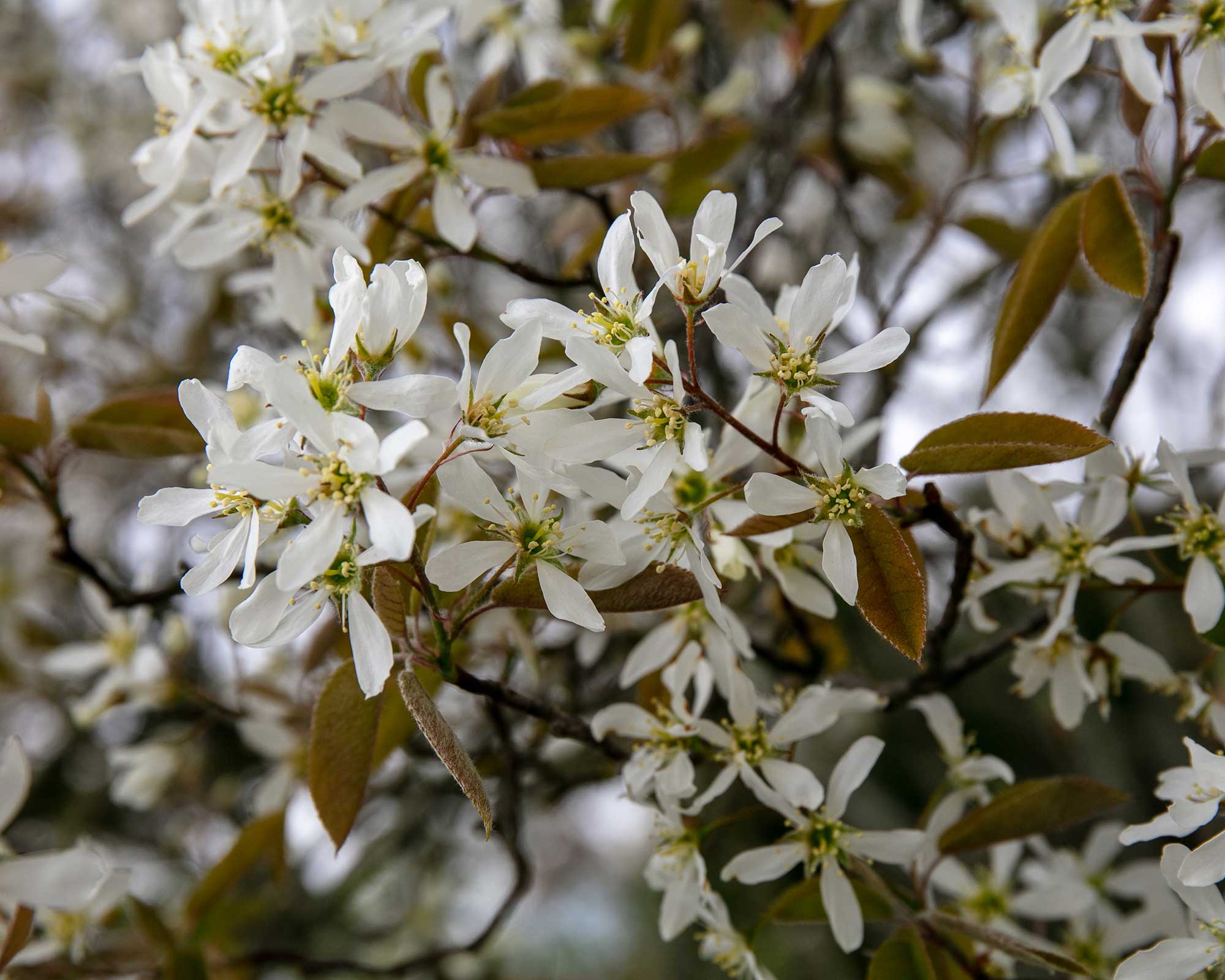
White blossom followed by copper-hued foliage make an amelanchier a lovely feature
These small deciduous trees, also known as Juneberry and serviceberry, have clusters of dreamy white star-shaped flowers on soft copper colored foliage in the spring. The leaves then turn to dramatic fiery reds and vivid orange in autumn.
Try Amelanchier lamarkii 'Ballerina', as this variety will not grow taller or spread wider than 13–16.5ft (4–5m). Or, as recommended by Jeremy Hall of Squire’s Garden Centers, opt for 'Snow Flakes', which grows to a similar height. It is 'covered in snowy white flowers in spring that are loved by bees,' then 'has glossy reddish purple berries which the birds adore followed by a blaze of autumn color.'
Despite the delicate blossom, these are hardy trees, which can cope with damp conditions and most soil types, although they do prefer clay or sandy soil. Our guide to soil types will give you a helping hand if you're unsure.
4. Magnolia
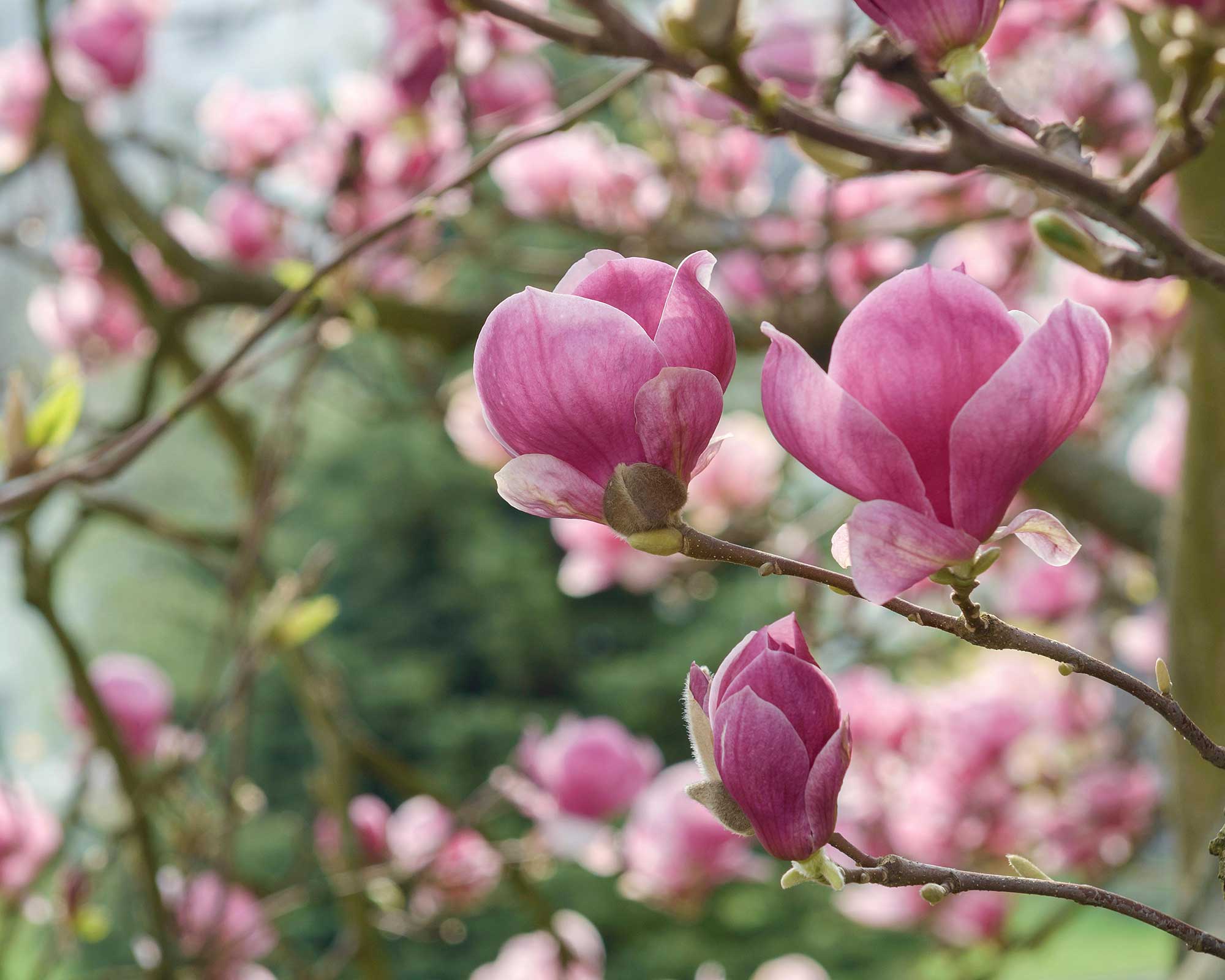
A magnolia will always turn heads in spring
The dramatic over-sized tulip-shaped blossoms in spring make the magnolia a real statement tree.
A variety such as Magnolia x soulangeana has flushed pink flowers. The neat, rounded shape means that it suits smaller spaces, and it will make a splash if you're looking for new front garden ideas. Expect it to grow to about 20ft (6m) tall with a spread of 13ft (4m) over 20 years.
These trees need full sun or partial shade and moist conditions. Avoid exposed areas, as a frost can ruin the display of blossom, turning the pretty petals brown. When planting, water well for the first few months, and during any dry spells in summer. A rabbit guard might be necessary if you live somewhere rural.
5. Crab apple
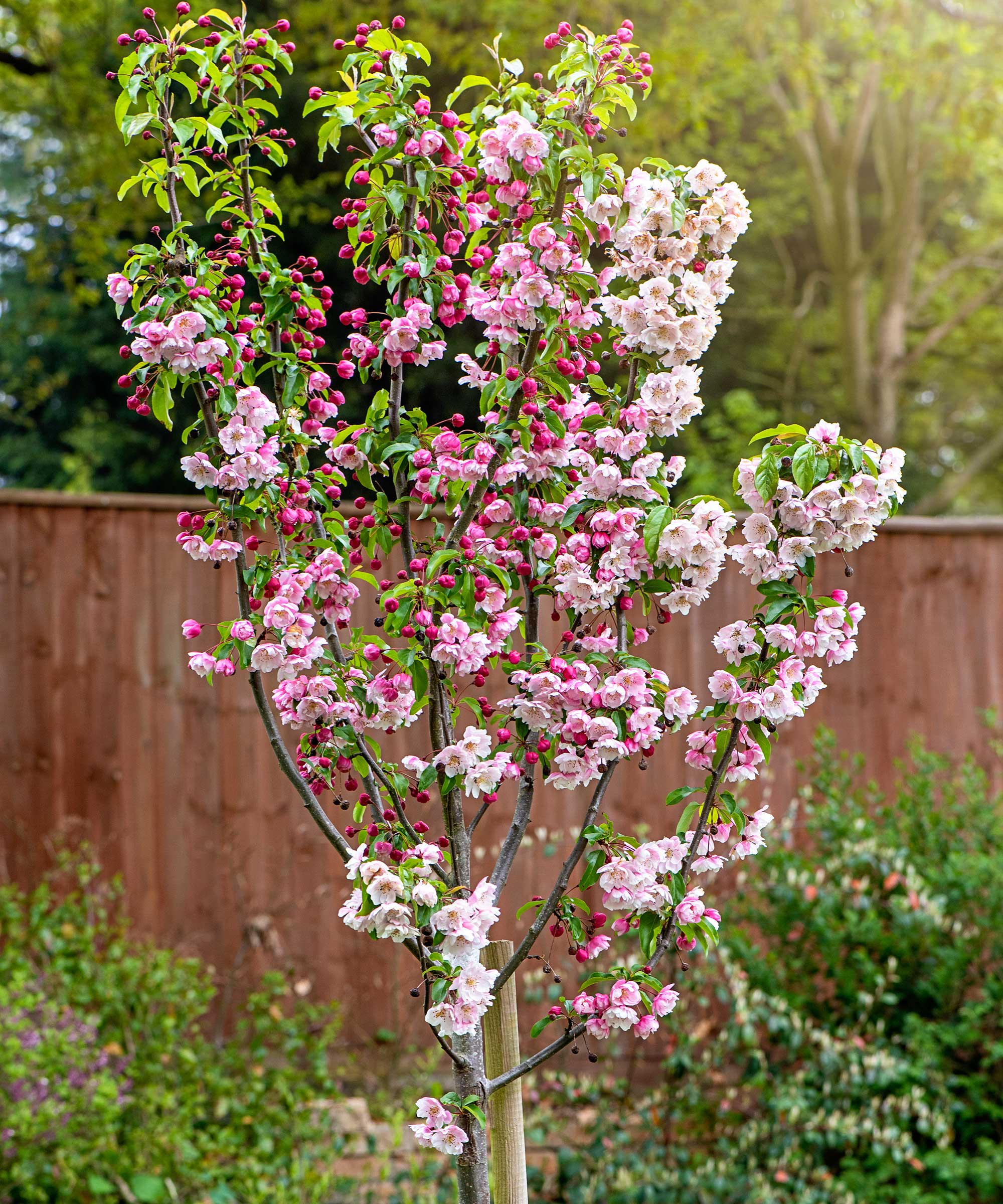
Try planting a crab apple for year-round interest
A compact crab apple tree can light up a small garden. In spring, it has beautiful clouds of pretty blossom. In autumn, it produces a profusion of tiny, richly colored fruits, in shades of scarlet, yellow, gold and red and it has attractively colored leaves, too.
The height of these trees can vary widely, so check carefully before you buy – planting a tree too big is one of the biggest small garden design mistakes. Smaller ones include malus 'Butterball' and 'Wisley Crab' which can reach a height of around 13ft (4m). Malus x zumi is a pretty rounded tree with golden fruit.
Plant them in a sunny site, in moist but not wet soil. In winter, remove any damaged branches, or ones that cross over each other. Bare root varieties should be planted between November to March, while container grown trees can go in at any time.
6. Acer
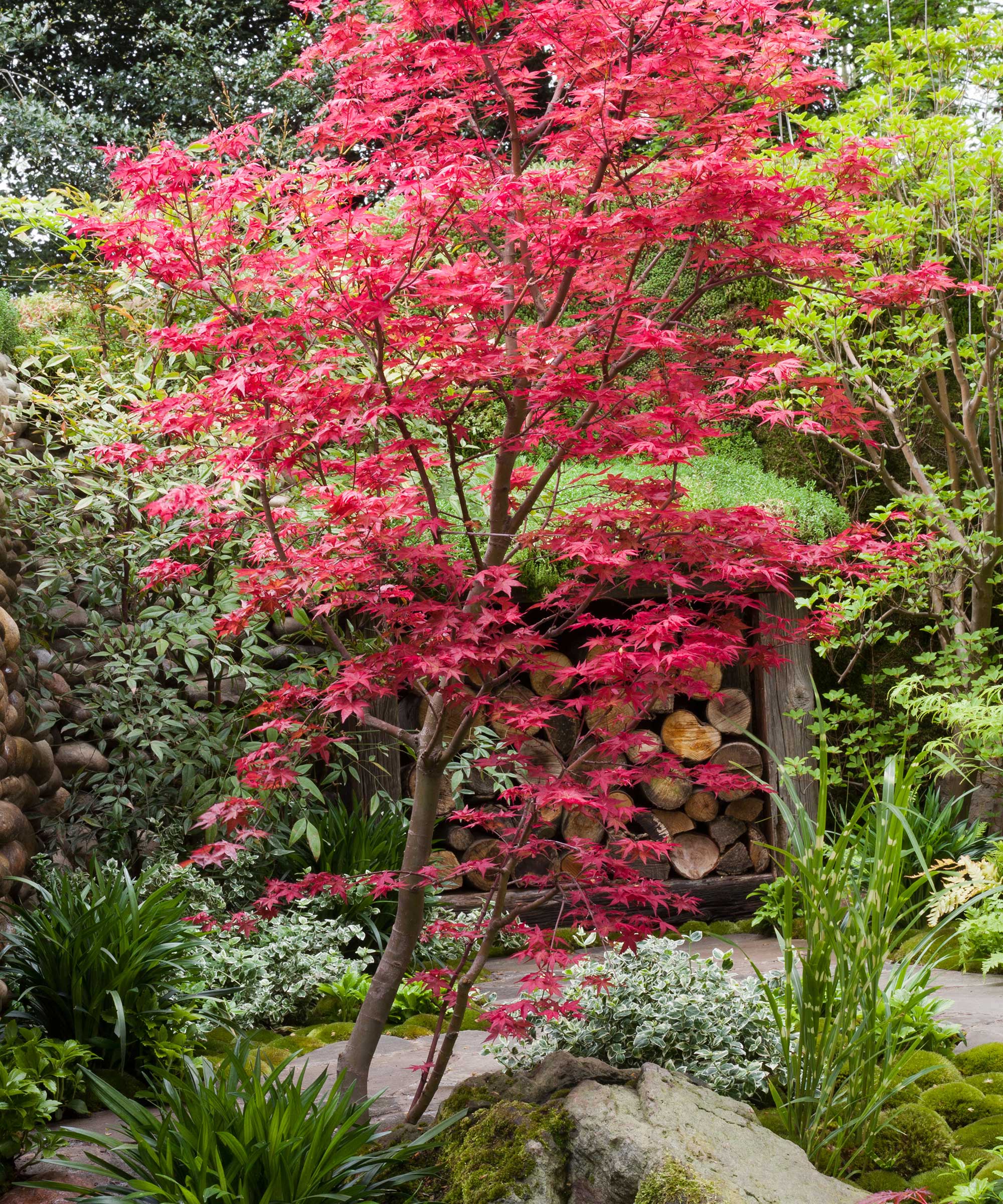
Bold and beautiful acers add vibrant color to a scene
If you love a riot of autumn color, then an acer is a must. They will introduce a pop of blazing orange, red, or a rich pink, and once the gorgeous leaves have fallen, many have ornamental bark which makes a lovely feature.
There are many different types to choose from, but Acer palmatum 'Orange Dream' is a good choice as it is a dense, small tree which grows to 13ft (4m) tall over 20 years. Acers prefer partial shade – the sun can scorch their leaves – and they will grow happily in containers or in the ground.
For pot grown trees, use ericaceous compost to plant them in, as this ensures a more vibrant foliage color. Avoid banking up the soil in a volcano effect around the bough, as this may encourage disease. Acers rarely need pruning: they are low-maintenance trees and an asset to any garden.
If you want to know more, our guide on how to grow acers has everything you'll need.
7. Ornamental cherry
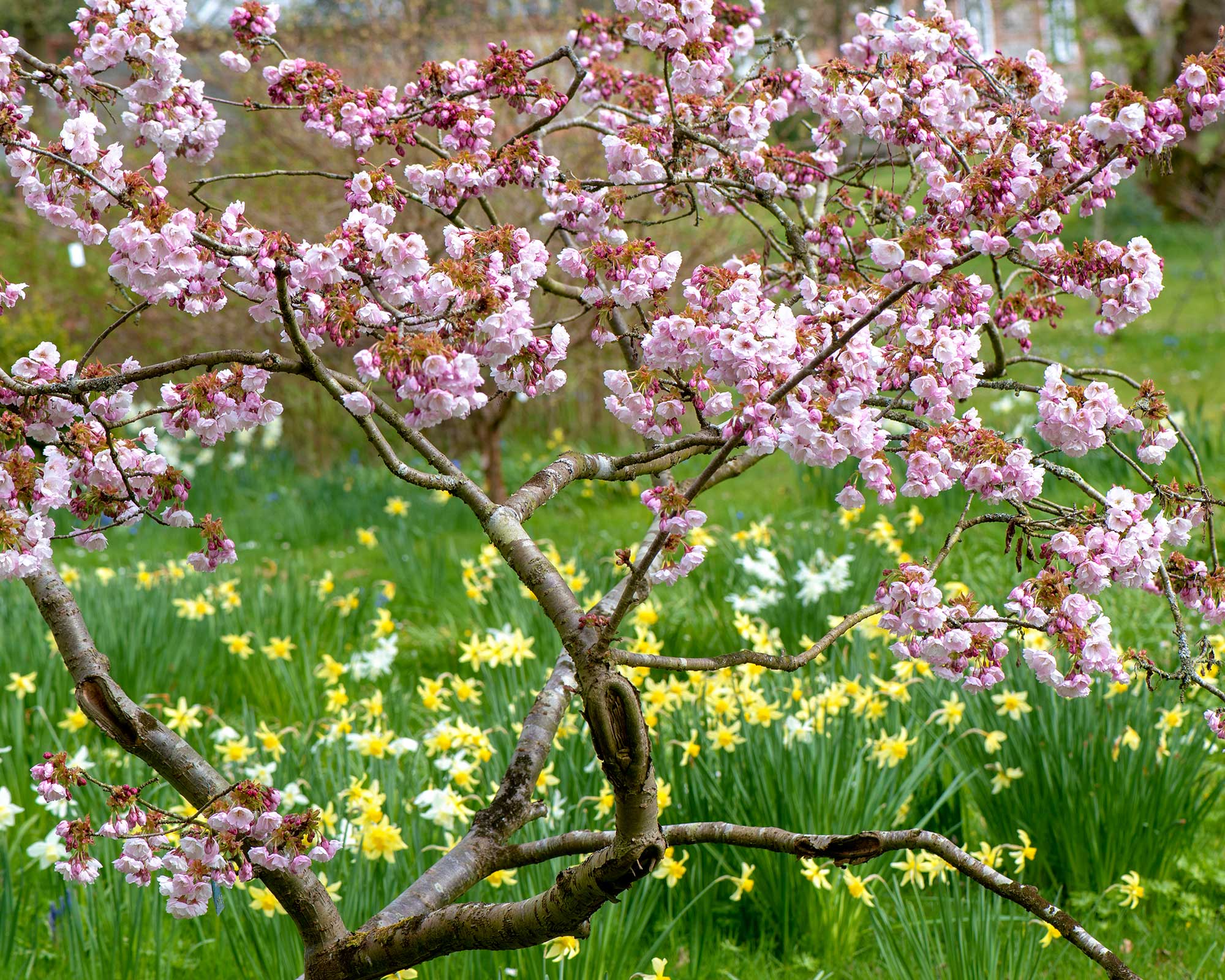
Bring clouds of springtime blossom to your yard
A confetti of pink or white petals in spring is the hallmark of cherry trees, and there are some very pretty smaller varieties which suit a compact space. Try Prunus yedoensis for its weeping branches and romantic white almond-scented blossom which is loved by bees and butterflies. It will reach around 10ft (3m) tall in 10 years. Another option is the cherry 'Pink Shell' which has pastel pink flowers which turn to white in April, contrasting beautifully with its light green leaves. And, it won't grow beyond 11.5ft (3.5m).
Ornamental cherry trees prefer full sun and moist, well-drained soil of any type. Once established, they are very low maintenance. The most difficult decision is choosing which variety to go for!
You can find more picks of the best flowering trees in our dedicated guide.
8. Chinese dogwood
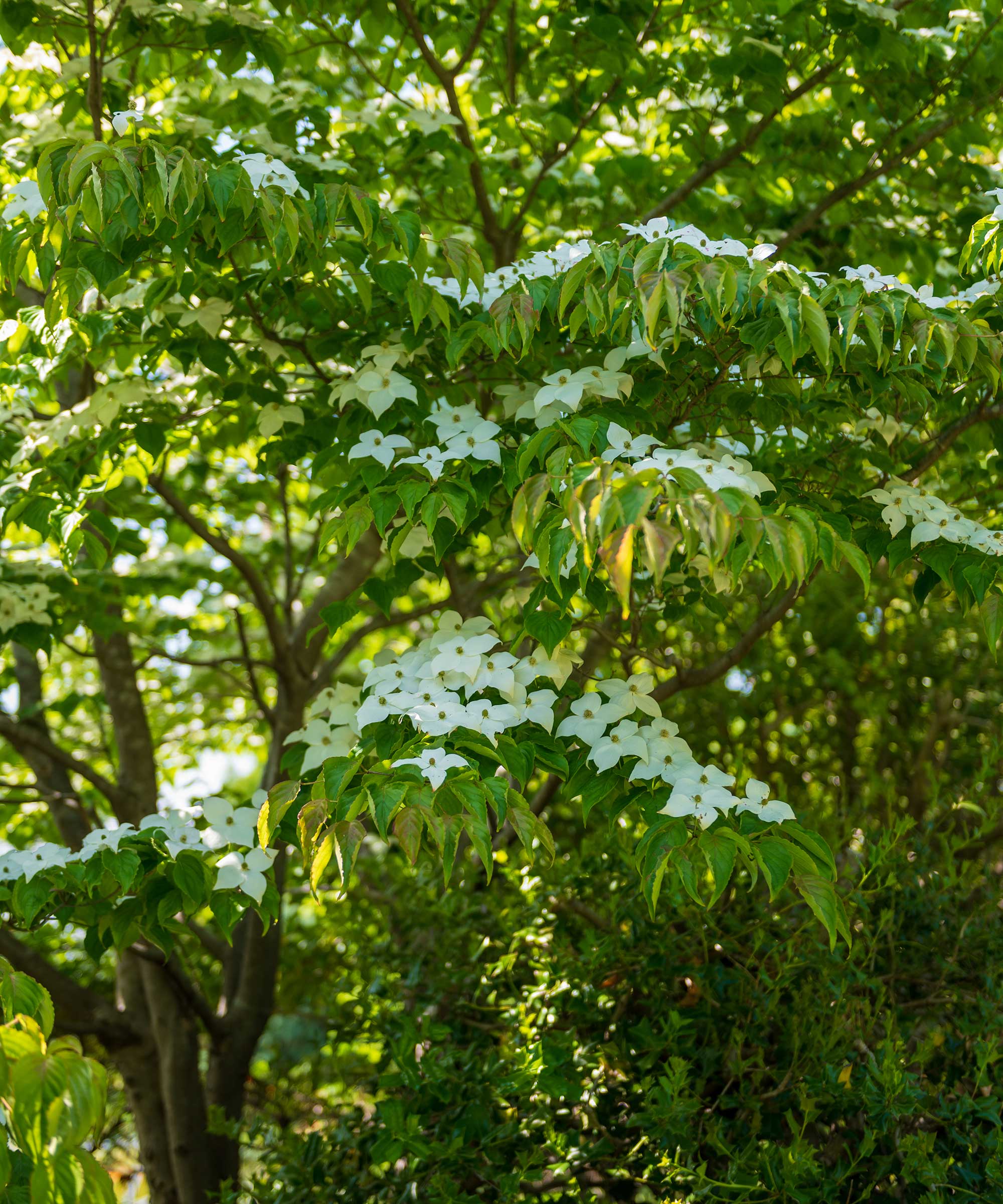
These trees are an elegant addition to a garden with their white flowers
Known for their show-stopping displays of flowers in June, the Chinese dogwood – or Cornus kousa – delivers throughout the seasons, with pretty autumnal foliage and an unusual pink fruit shaped like a strawberry.
Not every variety is suitable for a limited space, so check carefully before buying. For tiny gardens, a dwarf dogwood, such as Cornus kousa 'Angyo Dwarf' will only reach 4–5ft (1.2–1.5m) tall, but other varieties can grow as tall as 26ft (8m). These trees need full sun or partial shade, and they prefer a moist, free-draining neutral to acid soil.
- Looking for more ways to update your small space? Our buying guide to the best garden furniture has plenty of gorgeous designs.
9. Rowan
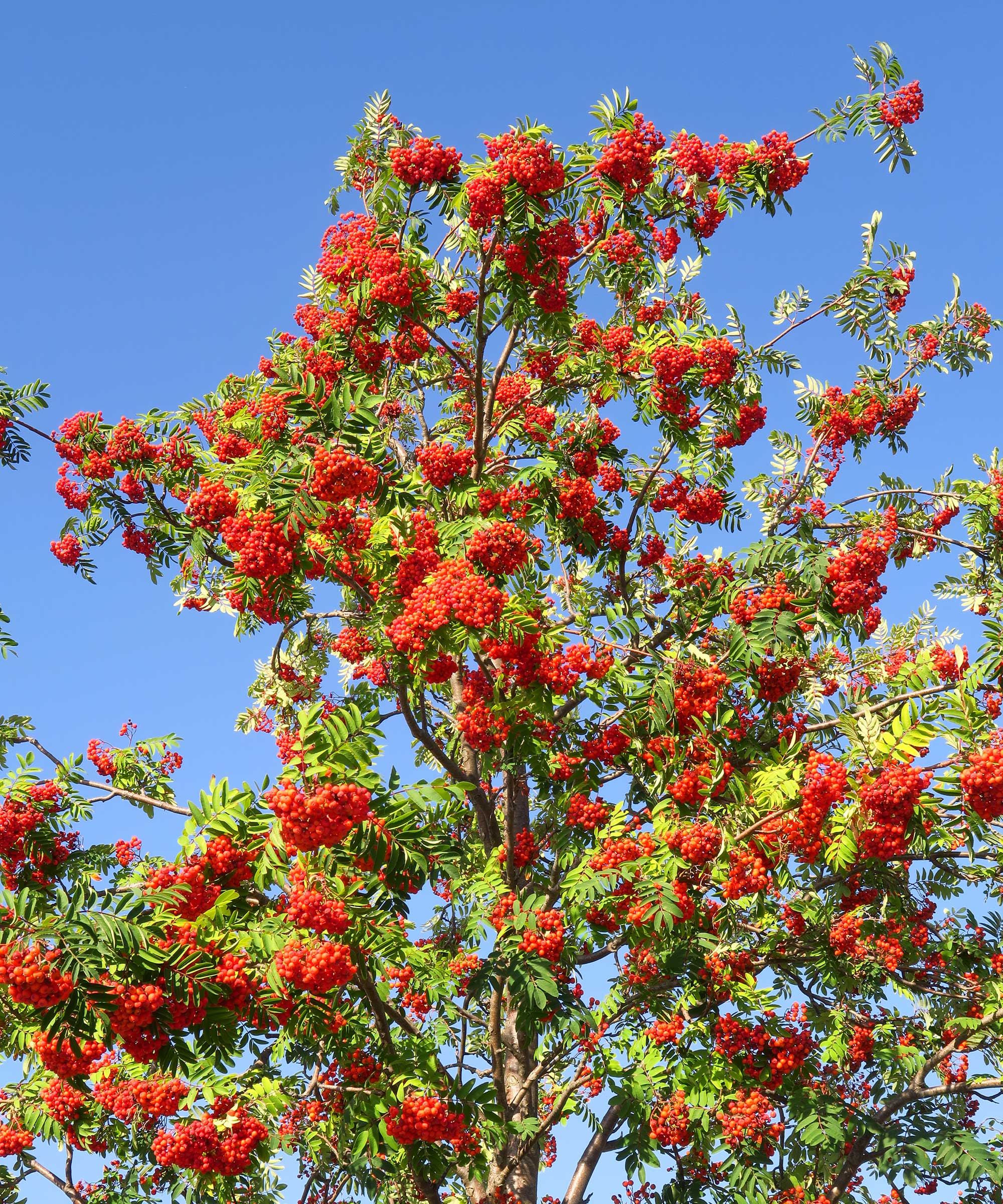
Rowan berries will attract birds to your garden
Theresa Scattergood, Plant Manager at Squire's Garden Center in Washington suggests the mountain ash, otherwise known as rowan, as one of the best trees for small gardens. It will give good height and privacy, she says – perfect if you're on the lookout for garden privacy ideas.
With their clusters of berries in autumn, they're ideal for attracting birds. Try the Sorbus vilmorinii variety, which has froths of summertime blossom, followed by pinkish berries which fade to white as fall turns into winter. It will eventually grow to 13ft x 13ft (4m x 4m).
10. Hawthorn
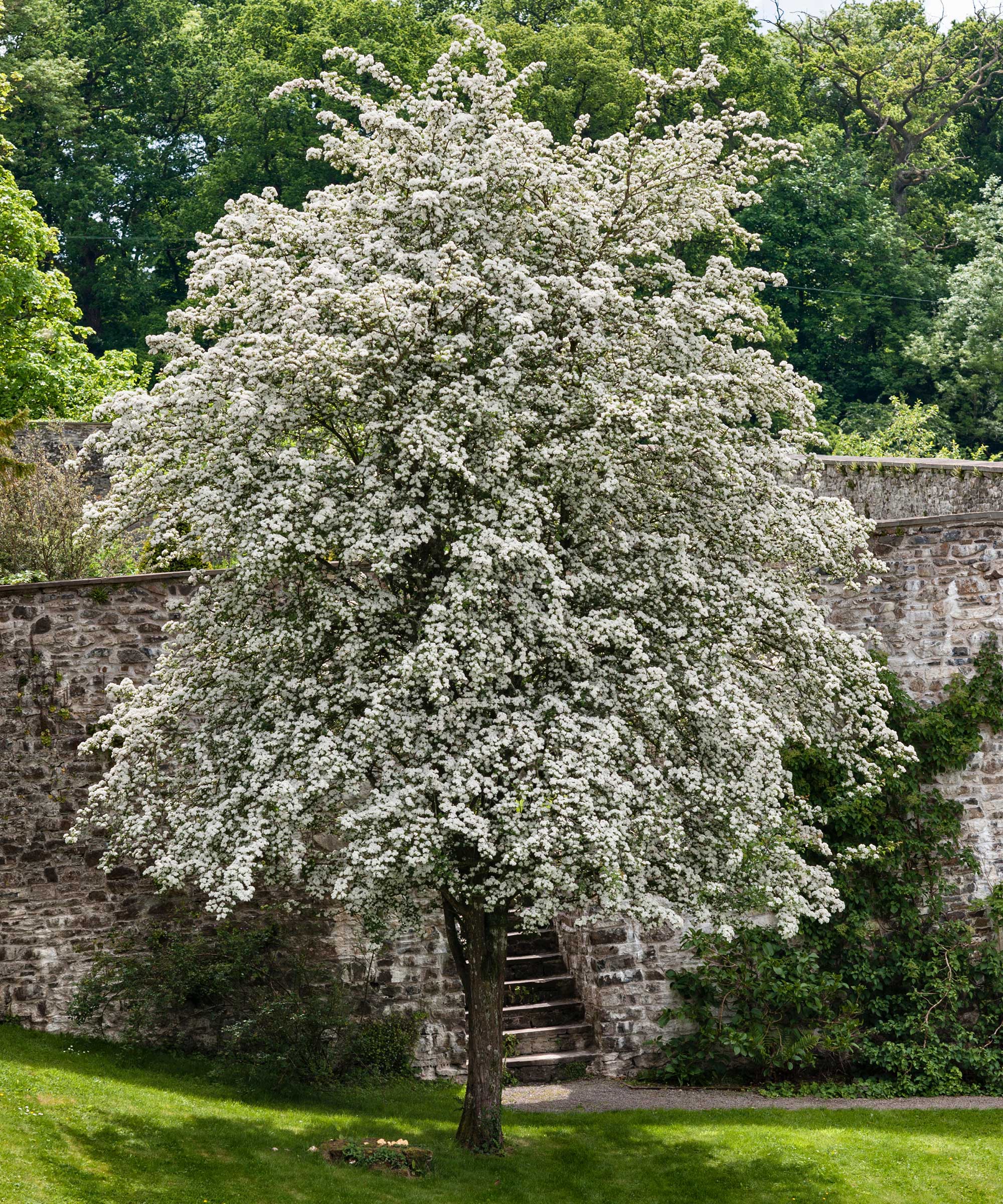
Frothy hawthorn blossom is a stunning springtime sight
Theresa also suggests hawthorn for small gardens. Commonly seen in hedgerows in the English countryside, the tree-forming variety makes a beautiful addition to a backyard and will welcome in wildlife.
The RHS suggests Crataegus persimilis ‘Prunifolia’ due to its compact growth, dark and glossy foliage, and white flowers followed by crimson berries and fall color. It will grow to a height of 16.5ft (5m).
What's more, it's a hardy tree, and will grow well in all kinds of conditions including exposed and damp sites.
11. Cotoneaster
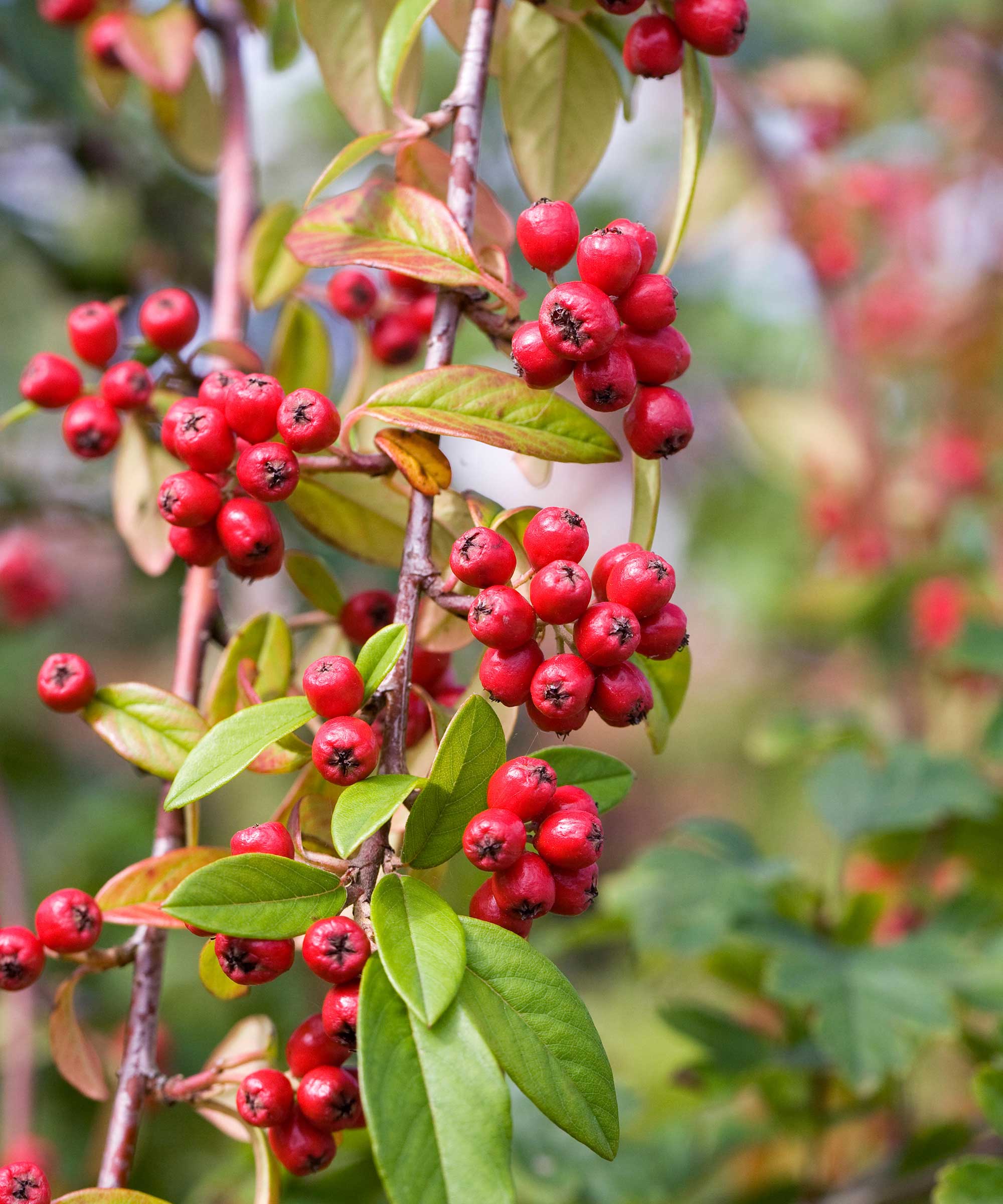
The bright red berries of cotoneaster 'Hybridus Pendulus'
Jeremy Hall, Group Plant Buyer at Squire's Garden Centers recommends cotoneaster 'Hybridus Pendulus' as one of the best small garden trees. Whilst some varieties of cotoneaster are shrub-like in form, this particular type is a weeping small tree, with elegant branches that form a dome shape.
It's 'covered in red berries in the autumn – great for birds and squirrels,' Jeremy adds. Plus, it's evergreen, so the glossy, deep green leaves will offer interest and color to your garden all year round. It grows to an ultimate height of around 6.5ft (2m) after 20 years and can even be grown in a pot if you're looking for courtyard garden ideas.
What is the best evergreen tree for a small garden?
Looking for a small tree that'll add a boost of greenery to your yard come winter? Try these evergreen varieties:
- If you like a more formal look and have some of the best garden shears handy, then evergreen topiary makes a great choice for small gardens. Try bay, holly, or Portuguese laurel. 'The shapes can be so versatile and different,' says Chris Bonnett of GardeningExpress.co.uk. 'These trees are also great in pairs for placing either side of a patio, a path or a set of stairs.'
- The RHS suggests Photinia x fraseri 'Red Robin', which grows to 13–16ft (4–5m) and has glossy red leaves and white blooms.
- Cotoneaster 'Hybridus Pendulus', as mentioned above is another lovely evergreen choice. For variegated leaves, try the semi-evergreen 'Juliette'.
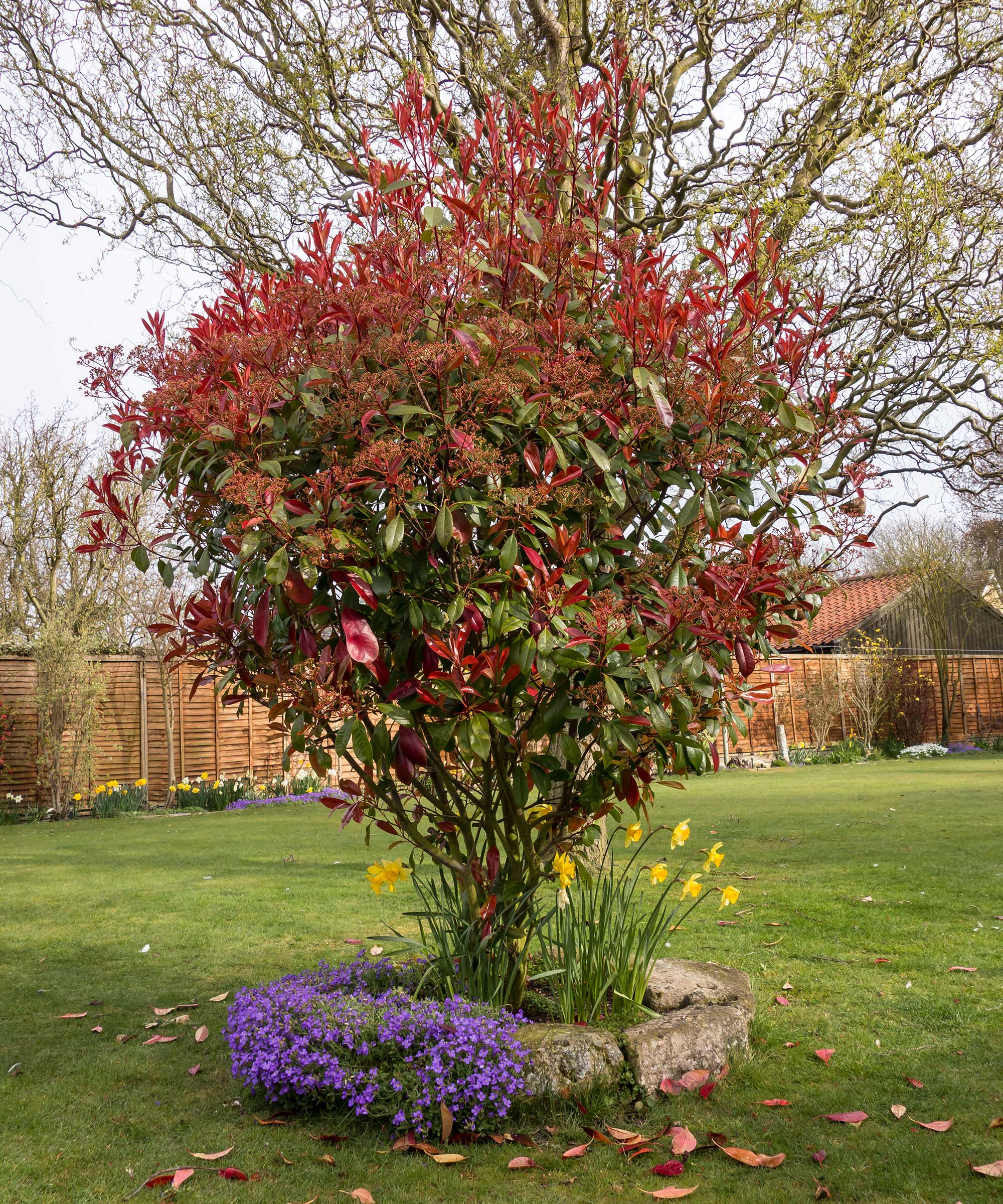
Photinia x fraseri 'Red Robin' offers vibrant color
How to plant a small tree
Feeling inspired to bring one of the best trees for small gardens into your plot? Once you've purchased it, here's how to plant it:
- Water the tree first in the container you bought it in.
- Dig a square-shaped hole that is twice as large as the tree's rootball and soil. It is important that the hole is deep and wide enough for the tree's roots to spread out.
- Put a 20 liter bag of John Innes No.3 compost into the hole and work it into the soil.
- Release the tree from its pot, taking great care not to damage the roots. Place it in the planting hole.
- Refill the hole, making sure that the tree is planted the same depth as it was in its pot.
- Press the soil around the tree down firmly.
- Water around the tree with a full can. Keep the tree well-watered, until it is firmly established.
If you need a new tool for planting your small garden trees, our buying guide to the best garden spade has you covered.
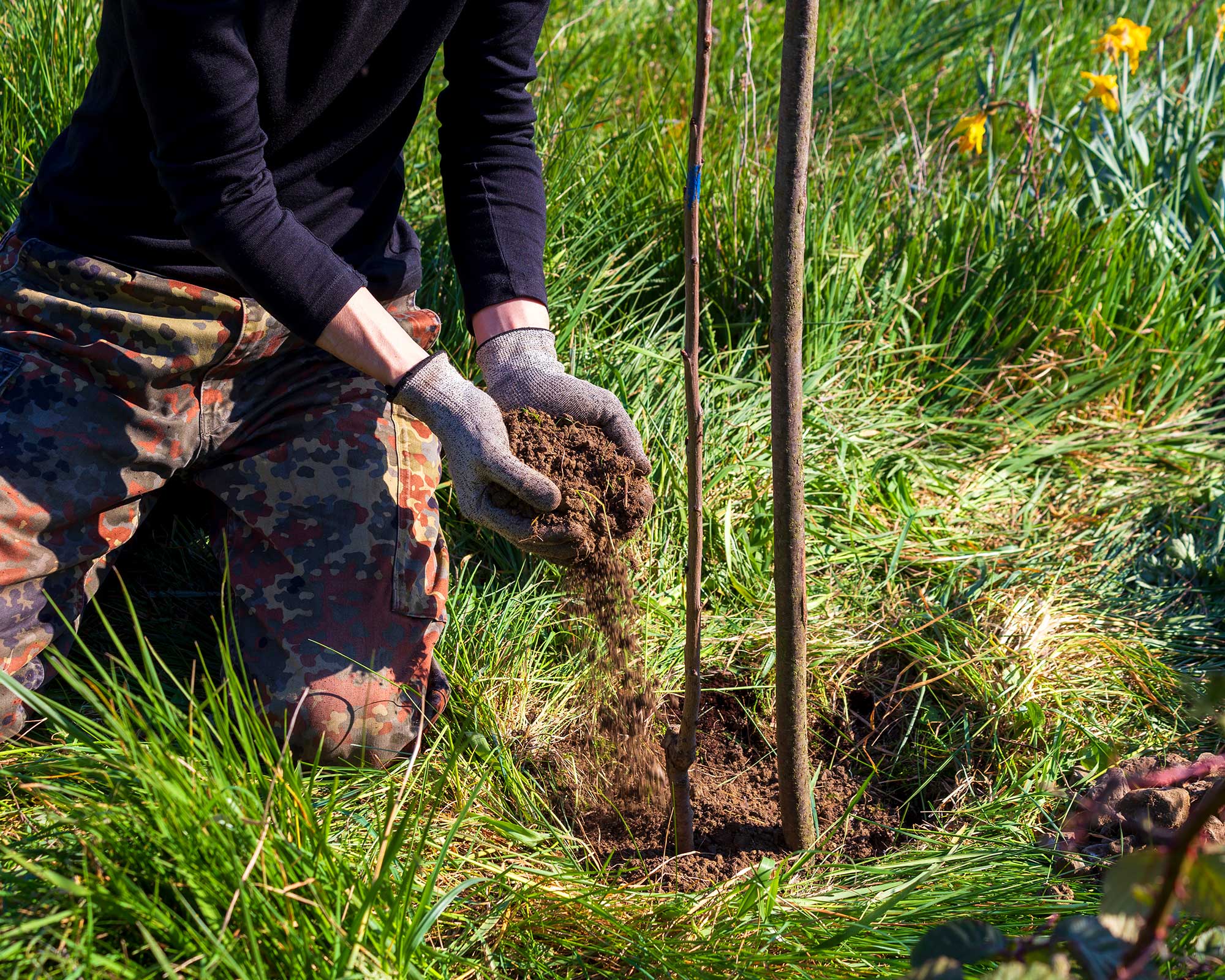
Planting a small tree is simple
When is the best time to plant a tree?
October and November are the ideal months to plant a tree. The temperature and level of moisture in the soil at this time are optimum for encouraging roots to establish and regenerate.
This is also the time when bare root varieties are available from garden centers and nurseries, offering a wide choice and lower prices than mature pot-grown trees.

An experienced freelance journalist, editor and columnist writing for national magazines and websites, Fiona now specialises in gardens. She enjoys finding and writing about all kinds, from the tiniest town plots to impressively designed ones in grand country houses.
